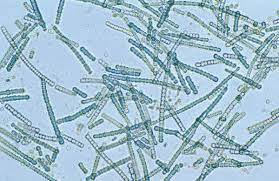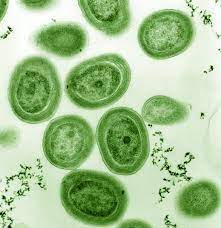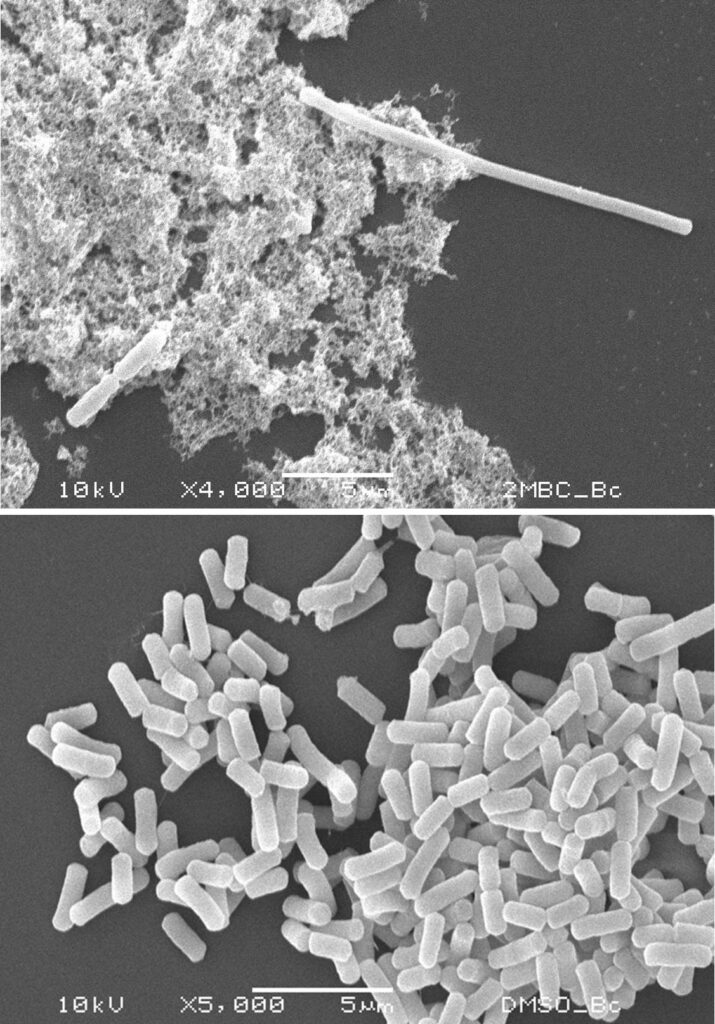Cyanobacteria are of the phylum from Gram negative bacteria and are also called Cyanophyta.
With the question for is cyanobacteria unicellular or multicellular, cyanobacteria are the most diverse type that can range from being unicellular to multicellular and do have filaments.
They do take up energy from the process of photosynthesis. The name of this means the colour blue in ancient Greek. The name thus given to these is also blue green algae. The botanist does not agree on giving the term algae to the eukaryotes but cyanobacteria are exception.
They are seen in the fresh water or even on the terrestrial lands. The cyanobacteria generally use the photosynthetic pigments, like the carotenoids and the phycobilins and other form of the chlorophyll that helps in absorbing the energy form the sun.
Cyanobacteria do mark good variety of morphology from the unicellular colonial to the filaments. The filamentous forms do show up cell differentiation like the heterocyst, the akinetes and the hormogonia. All of these together have connections and are termed to be the first mark of multicellularity.
Where is Cyanobacteria found?
They are much diverse and large in their phylum and are the photoautotrophic prokaryotes.
They are seen in almost all places. The sea spray consists of the marine microbes that includes the cyanobacteria and can be swept high inside the atmosphere which turns them into aeroplankton and can move anywhere.
They do often inhabit in colonial aggregates that can take up thousands of forms. They do have filaments dominating the upper area and is found in much of the extreme surrounding conditions like in the hot springs, the hyper saline water in polar areas and the dessert.
They are microscopic in nature and are in general in all types of aquatic form being their natural habitat. While in the fresh water, marine or in the mixed up ratio of marine and fresh, these do have one cell and also use up sunlight to make their own food.
They are actually optimized for all the next to be place conditions of having less oxygen. Some of them are used for nitrogen fixing and some live inside the water and the moist soils with being free or having a symbiotic equation with the fungi or the plants.

Are all cyanobacteria unicellular?
The cyanobacteria may have many sheaths to het the filaments or the cells from the colonies to bind to themselves.
Some of the cyanobacteria can be cells that do free live and can be unicellular like the Prochlorococcus, the Synechococcus, the Crocosphaera but also some of them do show symbiotic links with many haptophyte alage like the Coccolithophores.
The marine life cyanobacteria are quite extensive and do have high blooms with having their appearance in blue green or scum. The blooms can be toxic and can quite lead to the closure of the waters with many of the marine one being vital parasites of the unicellular range.
With the fact of is cyanobacteria unicellular or multicellular, the symbiotic state clears it all while getting itself linked up with the rest organism for its survival.
Many of the species of this can also glide up in the way as the cell moves differing from the movement of swimming or crawling relying on any outside organelle change and take place in the presence of substrate. The ones that do glide through the plants do possess filaments that help them move.
The gliding of the filamentous bacteria seems to be energized by a mechanism called the slime jet where the cell do release a gel that gets itself expanded fast and helps the, in getting itself hydrated also giving them a force of propulsion with some of the unicellular ones also using it.
The bacteria can enter into the plants via the stomata and then get to colonize the inter space that shall form loops and many inner coils. Some of them colonize the roots of plants while some target the root system.

Why are cyanobacteria multicellular?
They are on among the unicellular ones that are the oldest and did make it up gradually into many forms consisting of colonies as well.
The cyanobacteria are the largest with being the diverse prokaryotic phylum, along with the morphophytes that are of all range and varies from being unicellular to the multicellular one and also being filamentous.
Some of the cyanobacteria are able to get the nitrogen from the surrounding fixed and get them converted into the forms that can be used by the animals and plants. They also have seemed to raise the level of oxygen in the atmosphere by 2.45 billion and give the base of aerobic evolution.
With is cyanobacteria unicellular or multicellular, the species of the cyanobacteria are all filamentous or form colonies. The ones that are multicellular have developed many cell having separate functions. Some of the cells do carry on photosynthesis while other respiration and other absorb nitrogen.
The cyanobacteria get their energy from the process of photosynthesis while getting to absorb the light as the source of energy and use the nitrogen form atmosphere to make amino acids which are the protein building blocks. Yet, this can also lead to make trouble for getting to exchange and communicate materials.

FAQs-(Frequently Asked Questions)
Why are cyanobacteria not said to be multicellular?
This is because as the bacteria do not have any of the cell compartments thus they are said to be prokaryotes even after not having the same functions as the organism being multicellular.
Are the protists unicellular or multicellular?
Any group members of the protists that are eukaryotes are basically termed as the unicellular microscopic ones.
They can share any physical attributes or morphology same to that of the plants or the animals or even both yet they are unicellular. The very vast part of the protists is unicellular having many cells and does from up colonies.
How to cyanobacteria respire?
The process of respiration in these can take place inside the membrane of thylakoids along with photosynthesis sharing the same place for respiration.
The class of cyanobacteria uses up several protein pairs to perform aerobic respiration which marks the trait for being independently getting acquired in each of the class. It is thus consistent with the rise of the oxygen that takes place after the divergence.
Also Read:
- What happens to a cell in a hypotonic solution
- Photocell sensors
- Eukaryotic cells vs bacterial cells
- Does fungi have a cell wall
- Fuel cell aircraft
- Is fungi multicellular or unicellular
- Are yeast multicellular
- Bacterial cell type
I am Ankita Chattopadhyay from Kharagpur. I have completed my B. Tech in Biotechnology from Amity University Kolkata. I am a Subject Matter Expert in Biotechnology. I have been keen in writing articles and also interested in Literature with having my writing published in a Biotech website and a book respectively. Along with these, I am also a Hodophile, a Cinephile and a foodie.